St John's Anglican Church
Franklin
B. 1826 John Gray, London for St John's Anglican Church, Launceston.
Inst. 1862 St Andrew's Presbyterian Church, Launceston.
Inst. 1922 St George's Anglican Church, Invermay, Launceston.
Inst. Launceston Grammar School chapel 1933 Hill, Norman & Beard (o/n 341, 357)
(pedal action tub.pn.; manual compass reduced).
Inst. present loc. 1965 B.A. Clark with new case: orig. case remains at St John's Church, Launceston.
1m., 10 sp.st., 1c., tr. Man: 8.8 divided.8.4.4.2-2/3.2.III divided. Ped: 16.8.

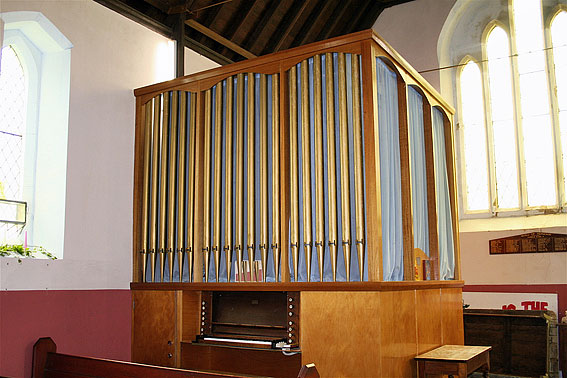
From Clarke and Johnson's Pipe Organs of Tasmania (Revised), pub Hobart Guild of Organists 1981 pp 79-80:
This organ was the second Pipe Organ brought toTasmania for church use. It was built by John Gray of
London in 1826 and erected in St. John's Church of England; Launceston, the same year.
The organ remained in St. John's until 1862 when it was replaced by a larger instrument. During this period an unenclosed chest was added (it is thought by Gray and Davison) carrying an 8 ft. Treble Clarabella and a 4 ft. Flute (full compass).
St. Andrew's Presbyterian Church, Launceston, purchased the Organ for 145 pounds and there it served for the next sixty years.
In 1922 the organ was purchased by the Launceston Church Grammar School at a cost of 85 pounds, to be installed in the School Chapel soon to be built. In the meantime it was erected in St. George's Church of England, lnvermay. The Grammar School Chapel was not completed until 1933. When the organ was moved to the Chapel it was rebuilt, a Pedal Board was added and an electric blower provided. The Pedal Organ consisted of an extended rank of 42 pipes, giving a 16 ft. Bourdon and an 8 ft. Bass Flute. Tubular pneumatic action was used for this section, whilst tracker action was retained in the rest of the organ. The work was done by Hill, Norman and Beard of Melbourne. At this time the compass of the organ was reduced from GGG to CC.
In 1965 this much travelled organ was again on the move, this time to St. John's Church. Franklin,
having been bought for 375 pounds as a memorial to Mr. and Mrs. A. J. Clark. The organ was installed in the church by Mr. Brian Clark, organist of the church, and the Opening Recital was glven by Mr. J. W. Nicllolls, F.R.C.O., A.R.C.M., the organist of St. David's Cathedral, Hobart, on the 24th October 1965.
Interesting features of this organ are the hand whittled stickers, no doubt made laboriously for little recompense by an apprentice , and two early examples of fan type combination pedals. The original front, with its gilded dummy pipes, hangs (since 1862) as an adornment on the west wall of St. John's Church, Launceston.
At the time of the last move an attempt was made, to no avail, to restore this front to the organ. So, regrettably, a modern case had to be built.
The organ is freestanding and still speaks with its original classical charm and brilliance, the latter being achleved by a comparatively powerful Fifteenth and a fiery Cornet of 3 ranks.
The 1826 specification was:
Manual |
8 8 8 4 2-2/3 2 III III |
bass treble treble 17.19.22 bass 17.19.22 |
tracker action
The c. 1850 specification was:
Manual |
8 8 8 8 4 2-2/3 2 III III |
bass treble treble treble 17.19.22 bass 17.19.22 |
tracker action
The 1933 specification was:
Manual |
8 8 8 8 4 2-2/3 2 III III 16 8 |
bass treble treble treble 17.19.22 bass 17.19.22 |
tracker action for manual and tubular-pneumatic for pedals
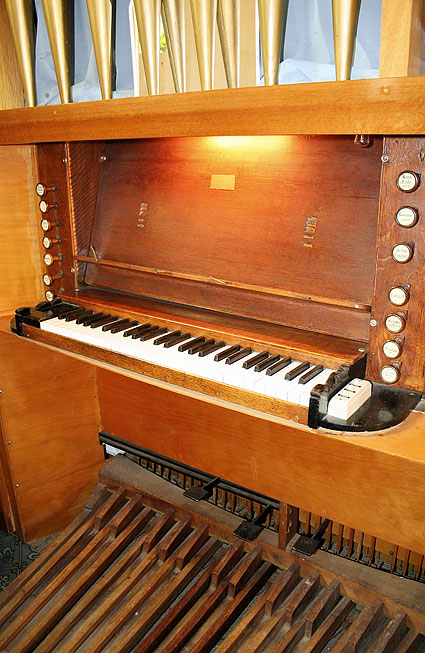 |
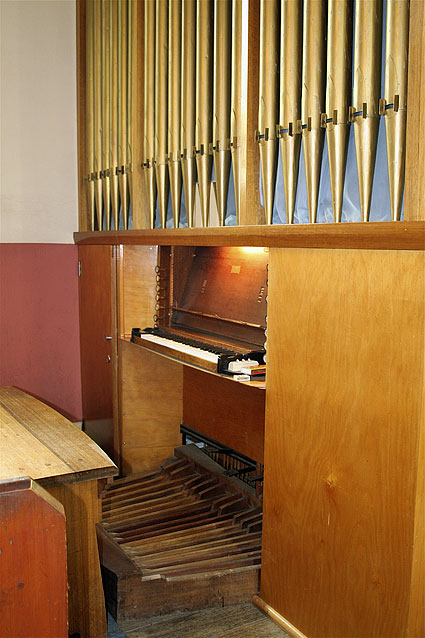 |
|
 |
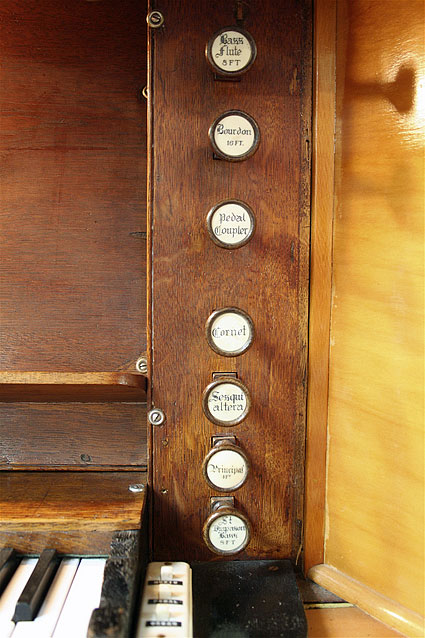 |
|
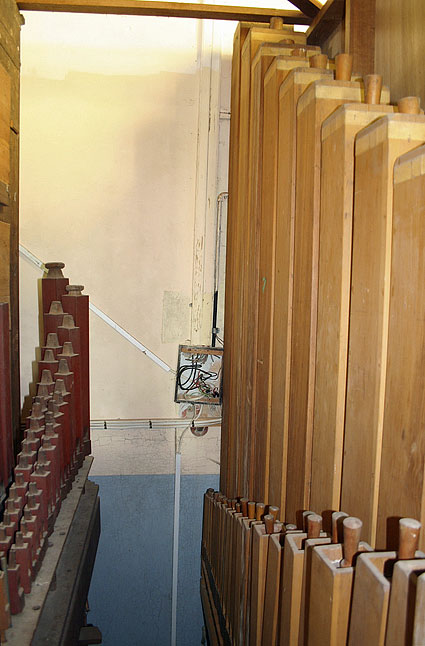 |
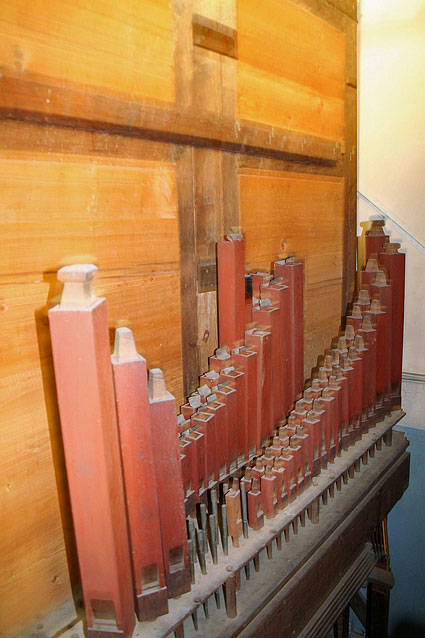 |
|
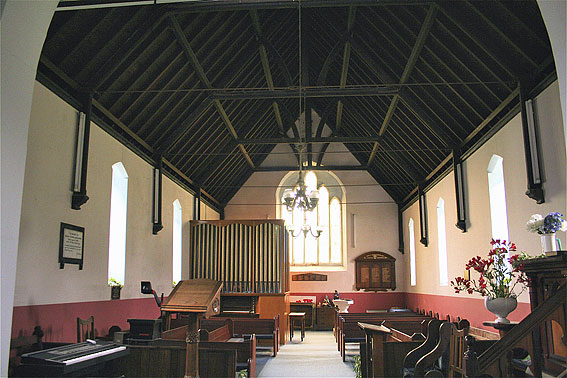
|
||
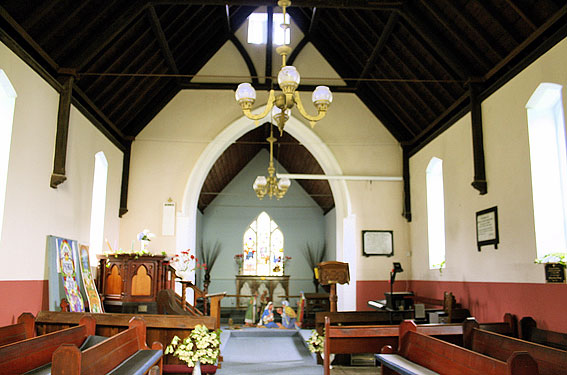
|
||
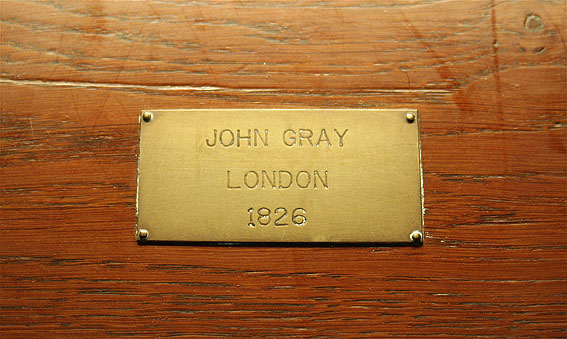
|
||
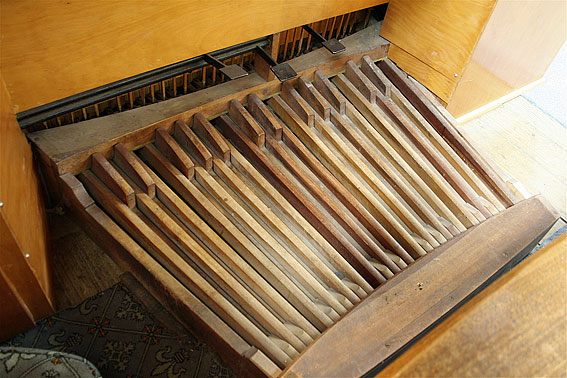
|
||
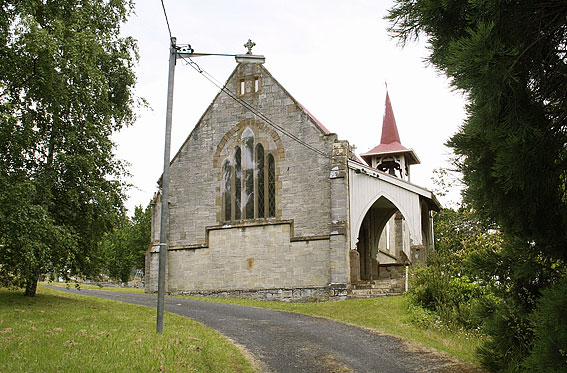
|
||

|
||
Photos: Trevor Bunning (Dec 2008)